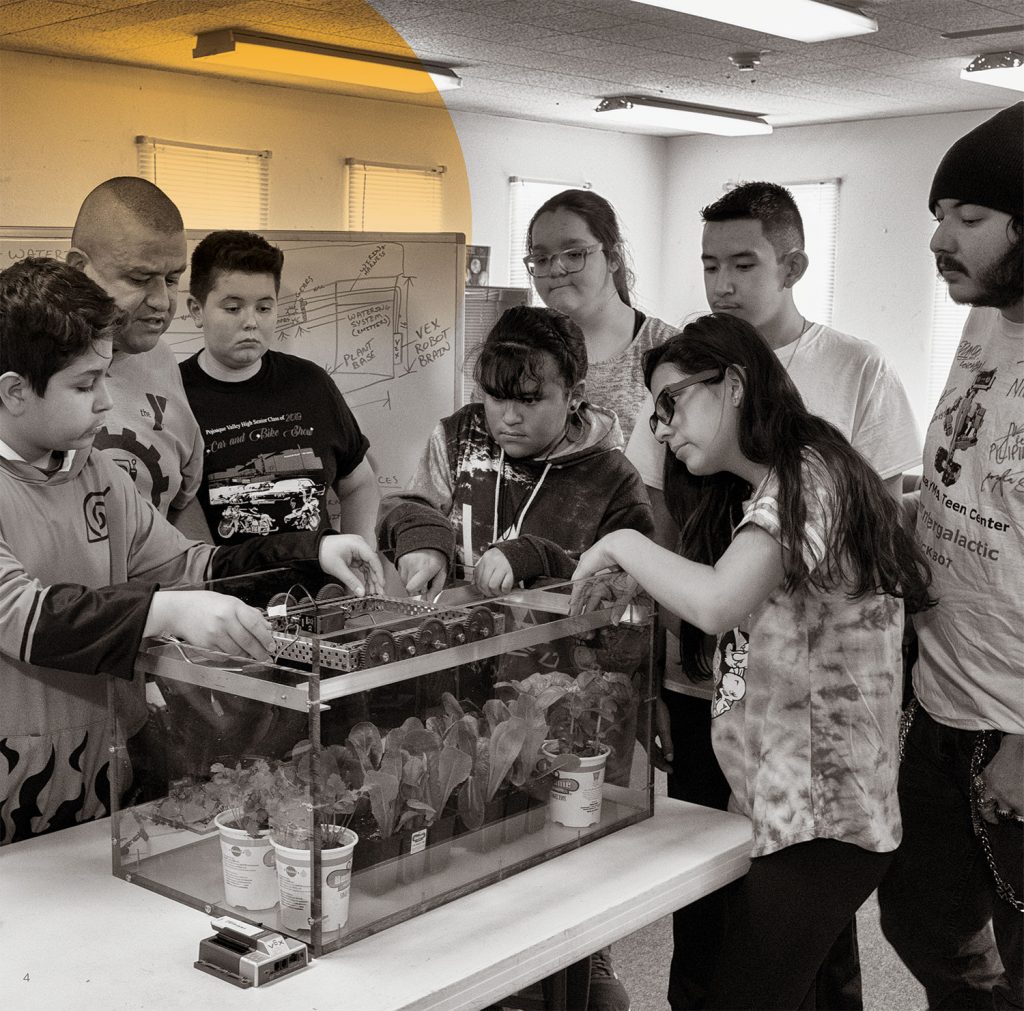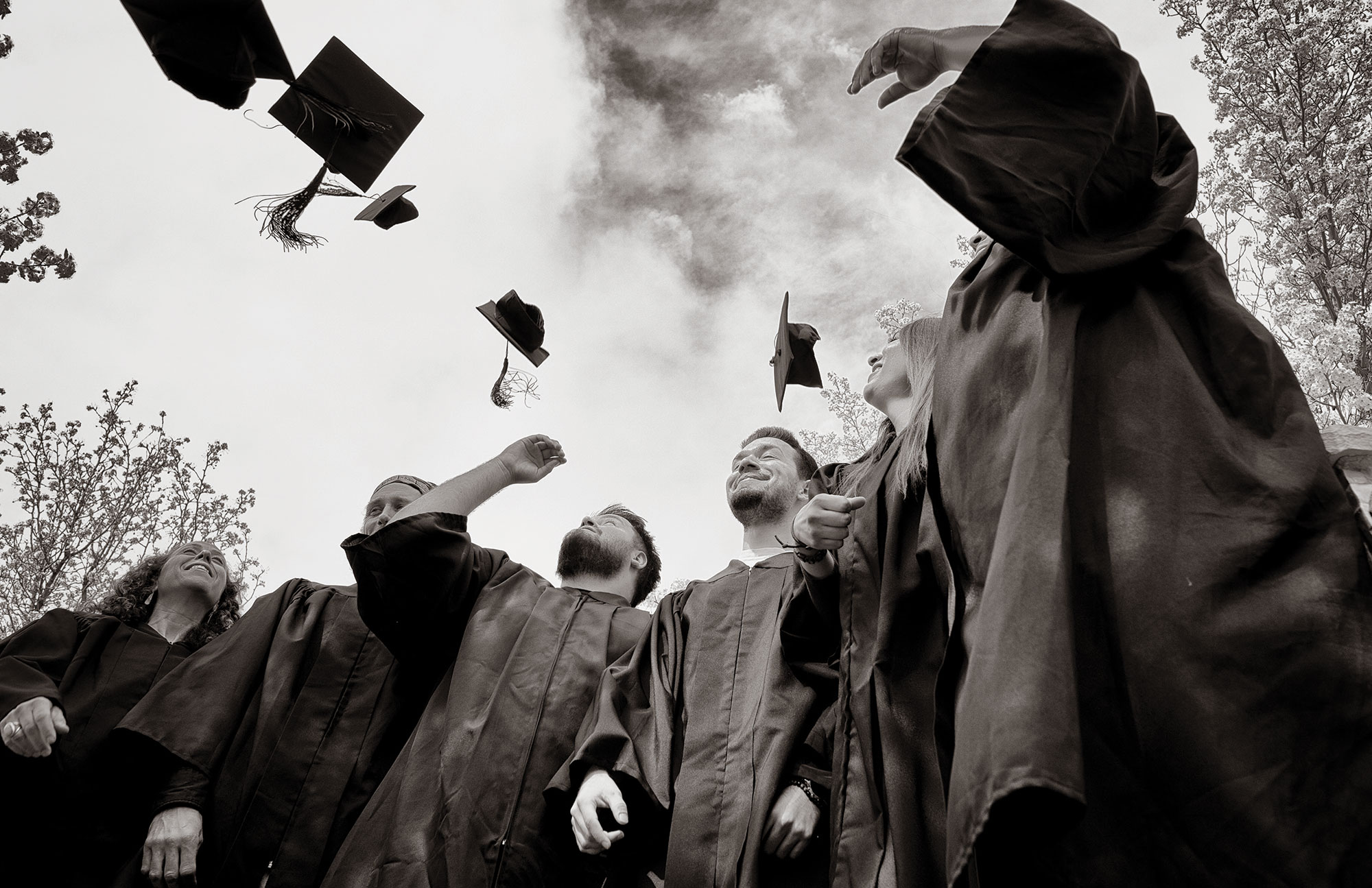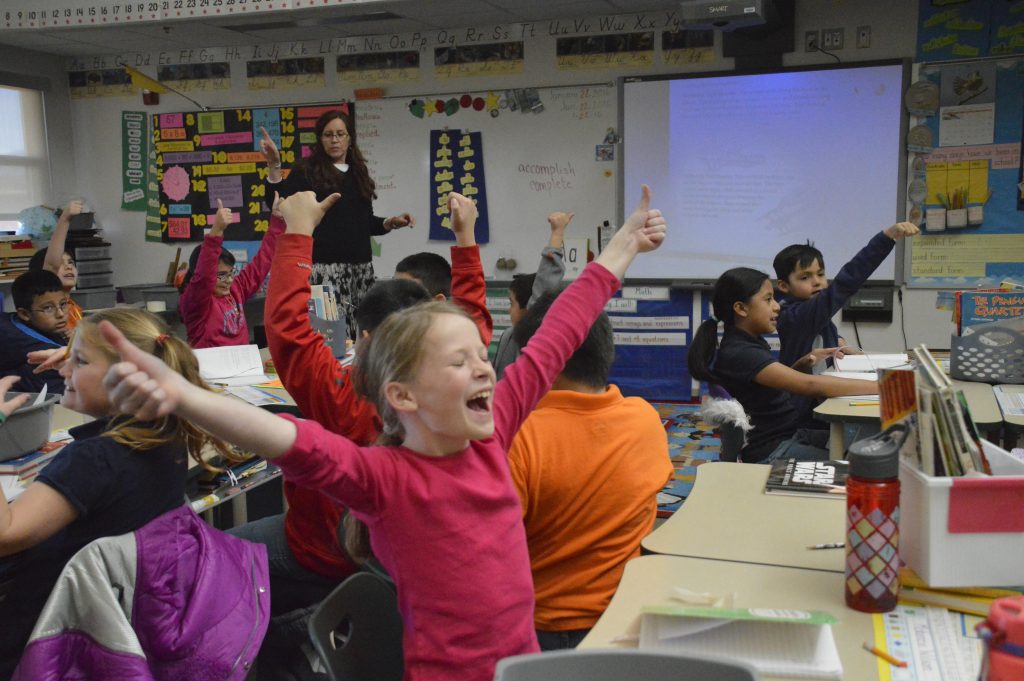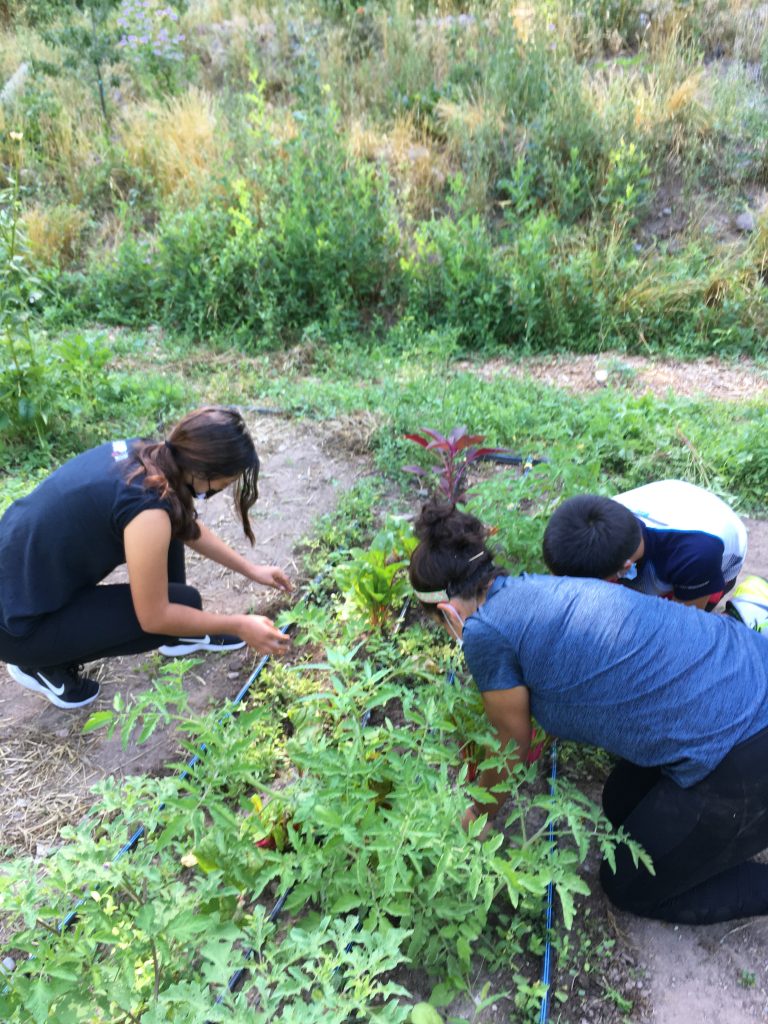Written by Kersti Tyson, PhD, Director of Research and Evaluation, LANL Foundation
Michael Dabrieo, Education Enrichment Director, LANL Foundation, and
Amy McConnell Franklin, PhD, SEL Educator
mission
The LANL Foundation’s mission is to support public education, learning, and community development in a region that includes 18 tribal nations and seven counties: Los Alamos, Mora, Rio Arriba, San Miguel, Sandoval, Santa Fe, and Taos. LANLF is committed to the improvement of learning and support structures that foster whole child development and community thriving.
introduction
Social Emotional Learning (SEL) nurtures our social, emotional, and cognitive development from birth to adulthood. School-based SEL develops the conditions necessary for nurturing children, youth, and adults’ potential. SEL in schools includes implementing effective SEL programs, but it also involves integrating SEL practices into the culture of our schools and classrooms so that every child has access to learning environments that are caring, cooperative, culturally and linguistically responsive, well-managed, participatory, and safe. There is strong evidence that when SEL is integrated in schools, it has a positive impact on a wide range of student outcomes, including academic performance, healthy relationships, mental wellness, and more. Students thrive academically when they have access to learning environments that are responsive to their lived experiences and are mediated through strong positive relationships. When they are well-implemented, school based SEL programs have been shown to enhance students’ social and emotional competence, promote academic achievement, and prevent mental, emotional and behavioral problems.
There is increasing recognition that integrating SEL successfully into New Mexico’s schools means addressing deep-seated inequities, including those articulated in the landmark Martinez/Yazzie vs. State of New Mexico lawsuit, where a judge ruled that the state was failing to help all students thrive, especially those who are Native Americans, English learners, identified as requiring special education services, or come from low-income families. SEL must go hand-in-hand with culturally and linguistically sustaining approaches that support educators to develop both cultural proficiency and cultural humility. SEL practices should align with local cultures and contexts by engaging communities and families in the work alongside educators.


background
Educators and students returned to the classroom last year after a traumatic period that included extended remote learning, isolation, and economic uncertainty. Despite being back at school, the pandemic rages on, as do civic and climate unrest. Teachers are working overtime to address their students’ mounting academic, social, and emotional needs. At the same time, we have learned more about how people learn and develop. Children grow and develop along interacting trajectories that include cognitive, physical, social, emotional, metacognitive, cultural, and linguistic dimensions. We also understand that children develop based on the opportunities they have to learn in the contexts where they spend time, such as their homes, schools, communities, and nations. To support children and youth to thrive in the 21s Century, educational practices need to align with our deeper understanding of what supports children’s thriving. At this critical juncture, we have the opportunity to recognize the vital role that educators play in supporting children’s social, emotional, cognitive, cultural and linguistic development. Educators create the conditions that support children to thrive and know they belong in school and beyond. In other words, SEL is needed now more than ever.
process
In December 2020 and January 2021, the LANL Foundation surveyed 573 educators (463 teachers and 110 school leaders) about their understanding and approach to SEL in their classrooms and schools. In addition, we held twelve focus groups with respondents to qualify our survey findings. In sum, educators from 88 schools within 20 Local Education Agencies in Northern New Mexico participated in this study. Survey and focus group respondents were from: Tribal/BIE Schools, Chama Valley Independent School, Charter Schools, Española Public Schools, Los Alamos Public Schools, Pojoaque Public Schools, Santa Fe Public Schools, and Taos Municipal Schools.
results
Our findings reveal strengths and weaknesses in how SEL is approached in our region. On one hand, the educators demonstrated that they are caring, thoughtful, and passionate professionals who want the best for our students. On the other hand, we learned that educators need more opportunities and support to deepen their understanding of SEL and to help them integrate it into children’s and youth’s opportunities to learn in our schools.

SEL is about providing emotional support to students in the context of school. Emotional check-ins, quiet time, restorative justice, access to mental health support, refocus opportunities vs. punitive measures, equity, openness.
NORTHERN NM ELEMENTARY SCHOOL PRINCIPAL
We summarize our findings here:
- 90% of respondents “agreed” or “strongly agreed” that schools and teachers have a responsibility to provide SEL education. The commitment is there, but educators need more tools and support to integrate SEL into their work.
- While educators share a commitment to SEL, they are not using a shared language or even a shared definition of what SEL is. This lack of consistency is problematic for implementation and accountability.
- Glaringly missing from survey responses was the understanding that SEL is important for adults too. Almost no respondents included adults in their definitions of SEL.
- Students’ access to opportunities to learn and engage in SEL practices varied by grade. PreK to 3rd grade students have the most consistent opportunities to learn and engage in SEL. 67% of PreK-3rd grade teachers said students had daily opportunities to engage in SEL. The number dropped for teachers of older students, with 45% of high school teachers reporting that their students had daily access to SEL learning.
- Teachers and leaders need and want to learn more about SEL theories and practices. Data showed that 75% of teachers were familiar with, but not fully confident about, the theories that support robust SEL practices, such as human development, neuro-sequential/trauma informed instruction, and practices that consider students’ backgrounds and cultures. Praxis matters, the more teachers seemed to know about SEL theories and practices, the more they indicated that they worked to integrate SEL into students’ daily learning opportunities.


recommendations
1 | Invest in locally developed SEL Frameworks that center culturally and linguistically sustaining practices.
These practices must affirm the various backgrounds and communities of our children and youth. In response to Martinez/Yazzie vs. State of New Mexico, the New Mexico Public Education Department (NMPED), districts, and schools must work thoughtfully and intentionally with tribes, nations, pueblos, communities, equity councils, and school boards to ensure students have access to SEL that reflects their communities and identities.
2 | Adopt statewide guidelines that help schools establish SEL Conditions for Thriving for children, youth, and adults.
These will advise leaders and teachers as they redesign classrooms and schools to ensure students and families have access to the conditions they need to thrive and have a sense of belonging in our schools. The guidelines will provide a common language for educators to use as SEL is woven into the fabric of our schools.
SEL is something
to be interwoven throughout the fabric of the school community… creating an environment which encourages all participants
to learn about themselves, others, and their way of being in the world, particularly
in relation to others.
NORTHERN NM TEACHER
3 | Invest in the adults who make schools work by supporting educator wellbeing and ongoing SEL professional learning.
Recognizing that adults also require SEL means more closely attending to adult wellbeing in our schools. Adults’ SEL needs can be addressed with systematic and ongoing learning opportunities and by ensuring our schools are excellent places to work. If the adults in our school systems are well and thriving, they will have more capacity to help ensure that our students are well and thriving. A place for educators to engage with other local educators dedicated to advancing SEL in New Mexico is SEL4NM (https://sel4nm.org).

4 |Focus on and expand SEL resources in middle and high schools.
Youths’ brains and bodies are developing in unique and important ways and schools should be designed to recognize and support them to grow healthy identities. Middle and high school educators and school leaders need more support to integrate SEL into daily learning experiences. This also includes rethinking the structure of our middle and high schools so that every student has a meaningful, longstanding relationship with an adult that they know will advocate for their wellbeing.
SEL is the foundation of all learning to follow.
Allowing students to identify their emotions, speak about them appropriately and be able to find the agency to ask for help when they need it.
I want my students to be able to calm themselves in order to focus, recognize their strengths, and instill the self-confidence to move forward. SEL and reflective techniques help with that.
NORTHERN NM TEACHER
Conclusion
At the LANL Foundation, we believe that our schools should foster conditions to ensure that every student and adult can thrive socially, emotionally, cognitively, culturally, and linguistically. The recommendations in this report are informed by LANL Foundation’s commitment to advocate for our schools and school systems and to reimagine and redesign those systems so that our children and youth are supported and prepared for living and thriving in the 21st Century. By integrating SEL throughout our districts, schools, and class- rooms in a systematic way, we can not only foster the conditions for students and educators to thrive, but we can also begin to heal some of the deep inequities that have developed in our schools over the last century.
The LANL Foundation’s mission it to support public education, learning, and community development in a region that includes 18 tribal nations and seven counties: Los Alamos, Mora, Rio Arriba, San Miguel, Sandoval, Santa Fe, and Taos. LANLF is committed to the improvement of learning opportunities and support structures that foster whole child development and community thriving.
